Raisin wines
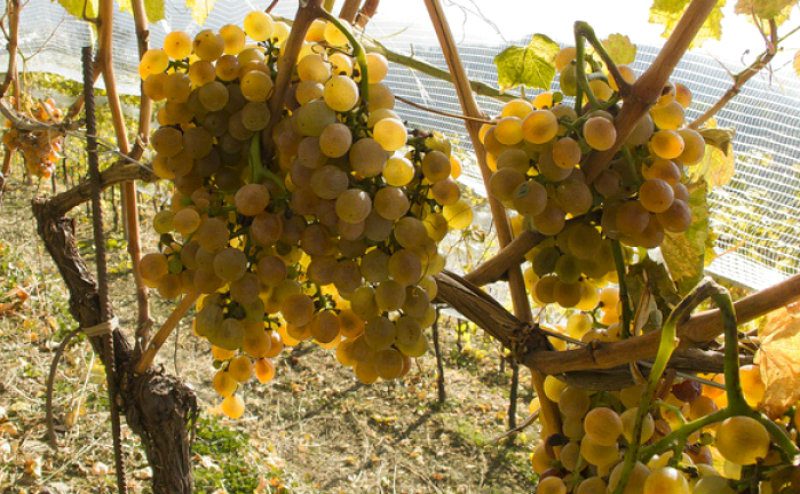
LATE HARVEST
Some grapes (riesling, gewurztraminer, sauvignon, muscat, malvasie, corvina and nebbiolo), where climatic conditions permit, lend themselves to over-ripening for a few weeks on the vine. The grapes become even sweeter because the glucose and fructose increase in quantity and become more concentrated. There is an enrichment of colours, aromas and flavours, except for the acids, which decrease somewhat. The juice obtained from crushing these grapes is very dense and the wine obtained will be sweeter or richer in ethyl alcohol depending on the duration of fermentation. Only part of the grapes can be fermented, especially if the aim is to produce a wine that tends to be dry but with great structure and softness, perfect for foie gras or washed rind cheeses.
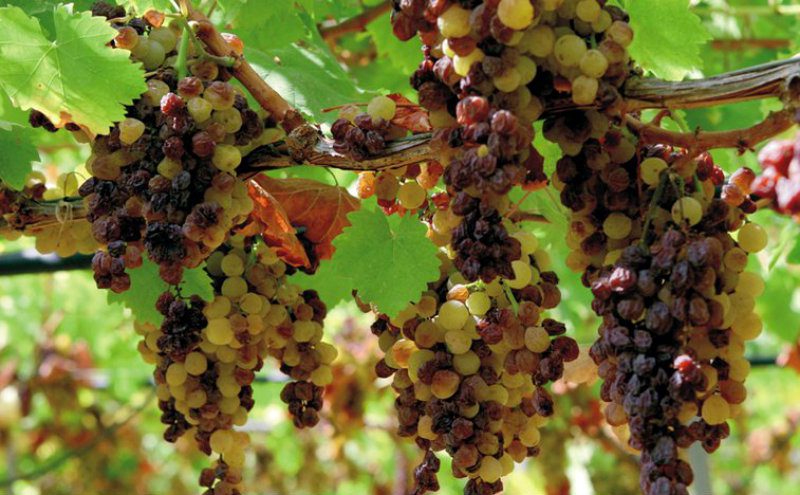
PASSITO WINE
- NATURAL WITHERING: the grapes are left to dry completely on the vine with an exceptionally late harvest - ALEATICO DI GRADOLI;
- WITHERING IN THE SUN: If the climate permits, the grapes are spread out in the sun and allowed to dry out, in which case the sugar concentration can reach 30-40 % - MOSCATO DI PANTELLERIA;
- FORCED WILTINGArtificial ventilation is applied with heated air around 30 °C rather dry with a humidity of about 55 - 60 % to avoid unwanted rot.

MUFFATI
Botrytis cinerea, at the right stage of development and with the right climatic conditions, gives shrivelled bunches with a colour ranging from purple to grey and intense, sweet and elegant wines. Developing on the skin of raisined grapes, noble rot forms a coloured felt, a dense network of filamentous hyphae, which causes evaporation raisining and the subsequent concentration of all extractive substances. It produces glycerine and aromatic substances, transforms several components and consumes some acids. In France, the famous Sauternes from sémillon grapes are produced in the Bordeaux area. In Hungary there is Tokaji from furmint grapes with excellent acidity. In Germany, the very sweet Trockenbeerenauslese is made from riesling and gewurztraminer grapes with rather low alcohol content.
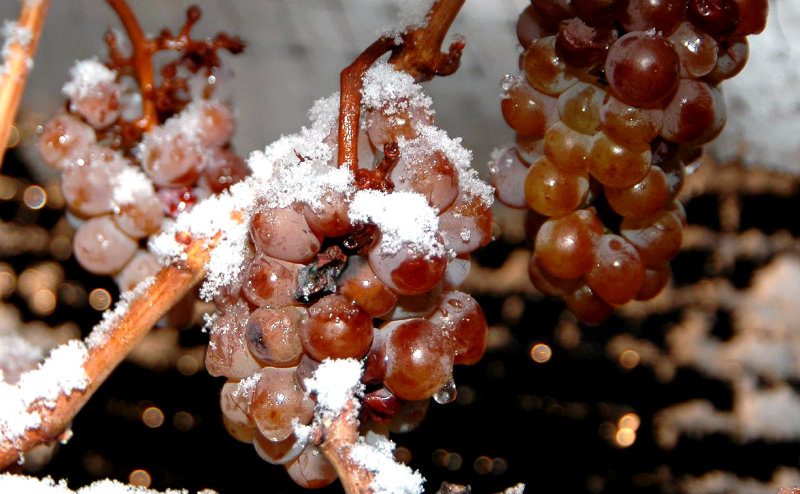
ICEWINE
Harsh winters and hot summers with sunny autumns give intense, deep wines from aromatic grape varieties that are particularly suited to countries such as Canada, Austria and Germany. The grapes are left on the vines in autumn and winter and harvested in January wrapped in an icy veil, when the water freezes inside the berries. During harvesting and pressing, the temperature is very low, below -7 °C, to obtain a must that is very poor in water but dense in sugars, acids, salts and other extractive substances. Golden or amber-coloured, perfumed with honey and baked apples, very ripe exotic fruit in syrup, jams, sweet spices and enlivened by a mineral vein with a long final trail, these wines are very sweet but balanced thanks to a pronounced savouriness and, especially when made from riesling, a lively and refreshing acidity.
BOTRYTISED WINES
two extraordinary special cases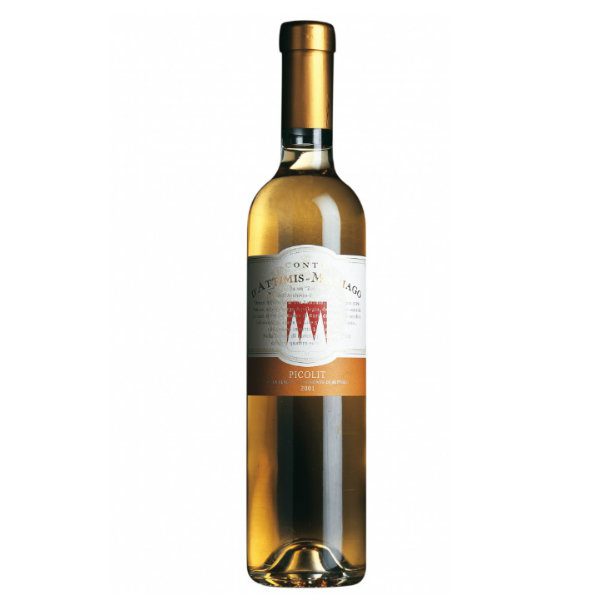
PICOLIT
Its origins are also uncertain: the agronomist Antonio Zanon (1696 - 1770), a merchant and entrepreneur, hypothesised that it was a vine of African origin transferred to France where its wine was popularly called 'Piquepoulle'. For Gaetano Perusini, historian of Friulian folk traditions and producer of Picolit near Rosazzo, the Friuli origin of the vine is certain.
Picolit, an indigenous white grape variety of Friuli, often overripe, has clusters that undergo millerandage with spontaneous floral abortion, leading to the development of 5-6 grapes per cluster on only 4 bunches per vine with a natural concentration of extractive substances. In summer, the stems and veins of the leaves, herbaceous shoots and petioles show a characteristic purplish-red colour. The name 'picolit' seems to derive from the small size of the berries, with a slightly speckled golden yellow skin. The result is a very fine dessert wine with a straw-yellow to golden colour, a scent of sultanas, honey and dried apricots, and a sweetish, velvety and persistent flavour.
The nose is complex and elegant, the aroma contains hints of acacia flowers, pastries, apricots, candied fruit and honey. In the mouth it is creamy and intense, sweet but not cloying, the good acidity well supports the warm parts of the wine, harmonious, fruity and with a long finish, it has a very persistent aftertaste. It is an excellent accompaniment to dry pastries and can be paired with blue cheeses and pâté.
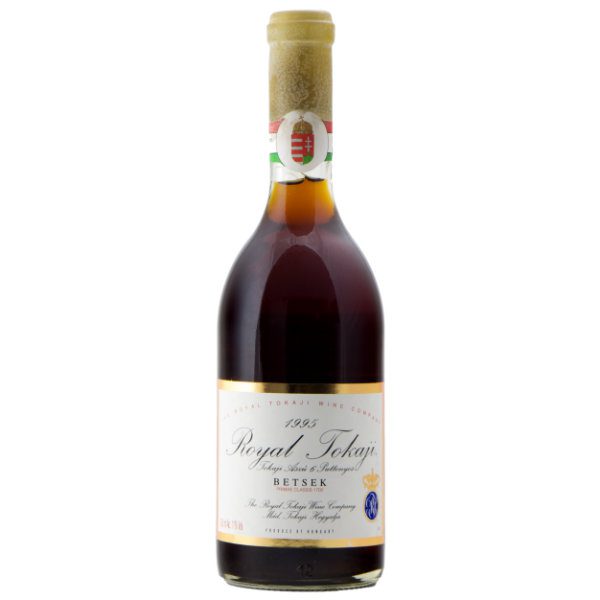
TOKAJI
In November, the bunches of furmint with great acidity, structure and aromas and a thin skin that favours the development of the Botrytis cinerea, a good quality base wine is produced that will be stored for one year in 137-litre barrels. Must obtained from botrytised grapes is then added and undergoes a second fermentation. The quantity of this must is crucial for the final character of the wine, which is therefore classified according to the puttonyos added (= panniers taken as a unit of measurement that corresponds to about 25 kg) of aszù grapes (= dried and attacked by noble rot). The wine is then left to rest in suggestive cellars dug into the rock, sometimes in drained barrels to encourage the development of a particular strain of Cladosporiumanother mould that develops a surface veil similar to that of some types of Sherry.
- Aszù 3 puttonyosIt must contain more than 60 g/l of natural sugar and 30 g of extract after deduction of sugars, with a maturation period of at least 3 years.
- Aszù 6 puttonyosIt must contain more than 150 g/l of natural sugar and 45 g of extract after deduction of sugars, with a maturation period of at least 6 years.
- Aszù EszenciaIt must contain more than 250 g/l of natural sugar and 50 g of extract minus sugars, with a maturation period of at least 6 years. Rare and precious, made only from the must of botrytised grapes, with a juice so dense and concentrated that the yeasts struggle to ferment and special strains are needed. Golden yellow or pink in colour, it has aromas of honey and candied citrus fruits, sultanas and dried figs, white chocolate and vanilla, enamel and varnish.
